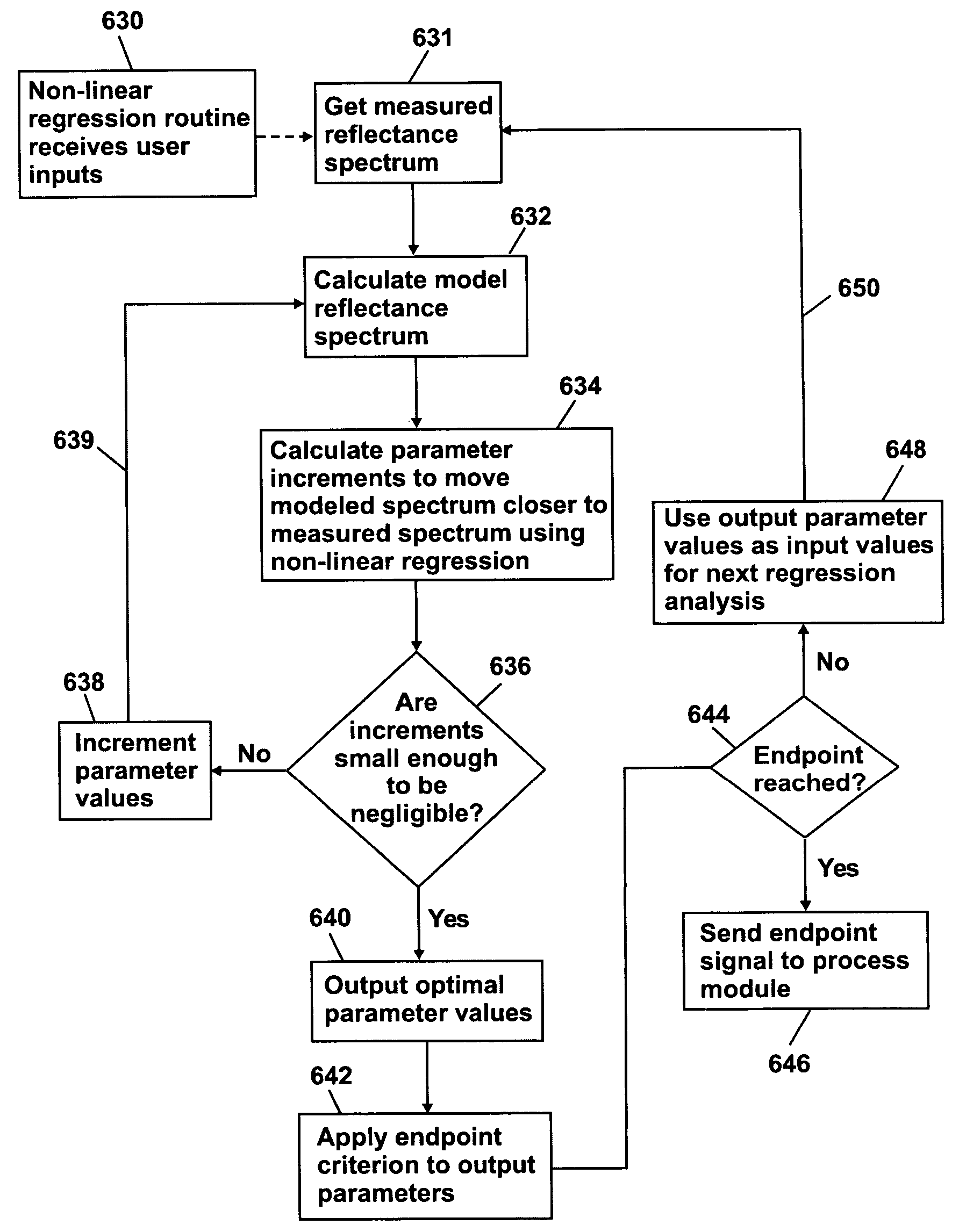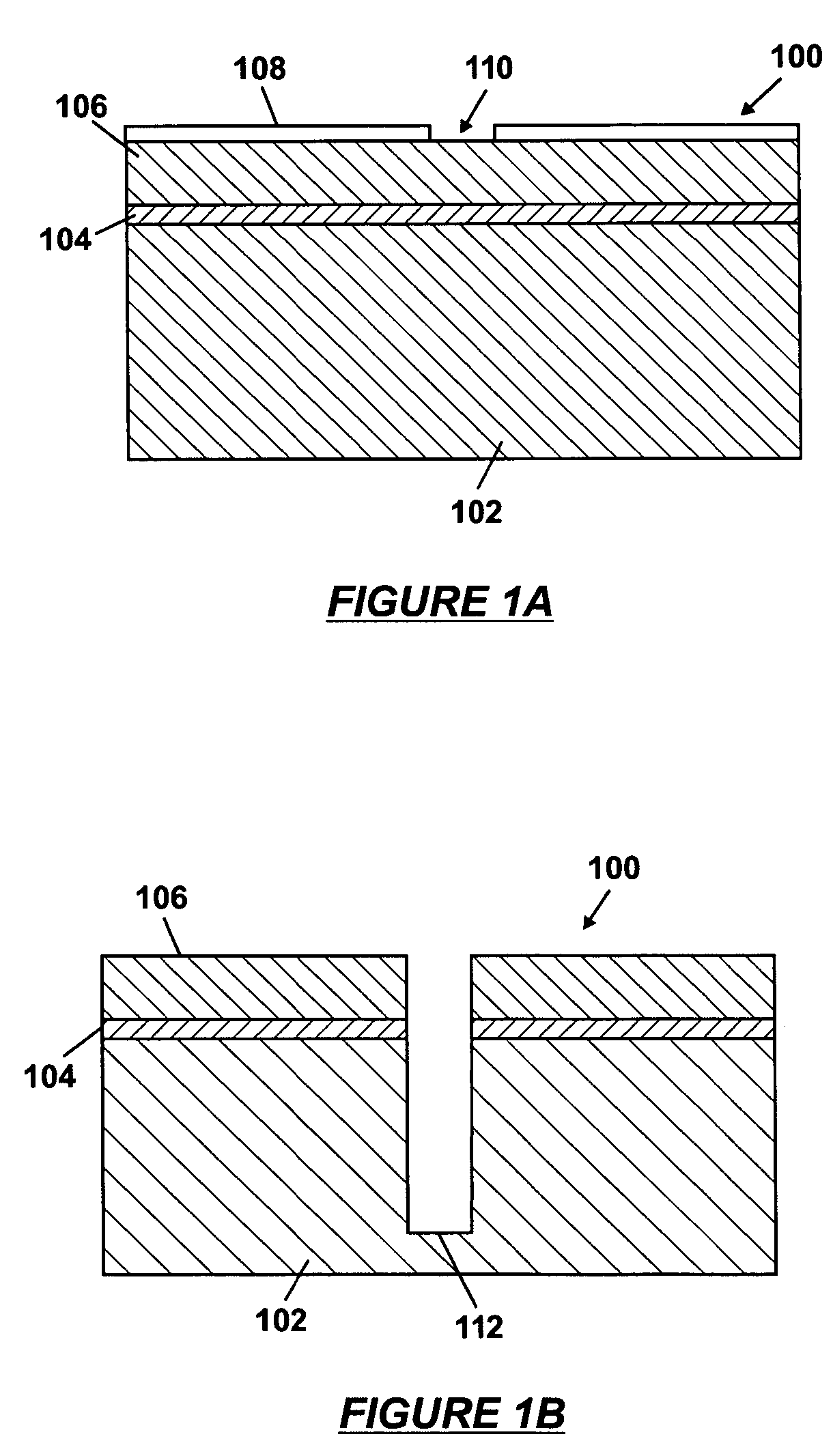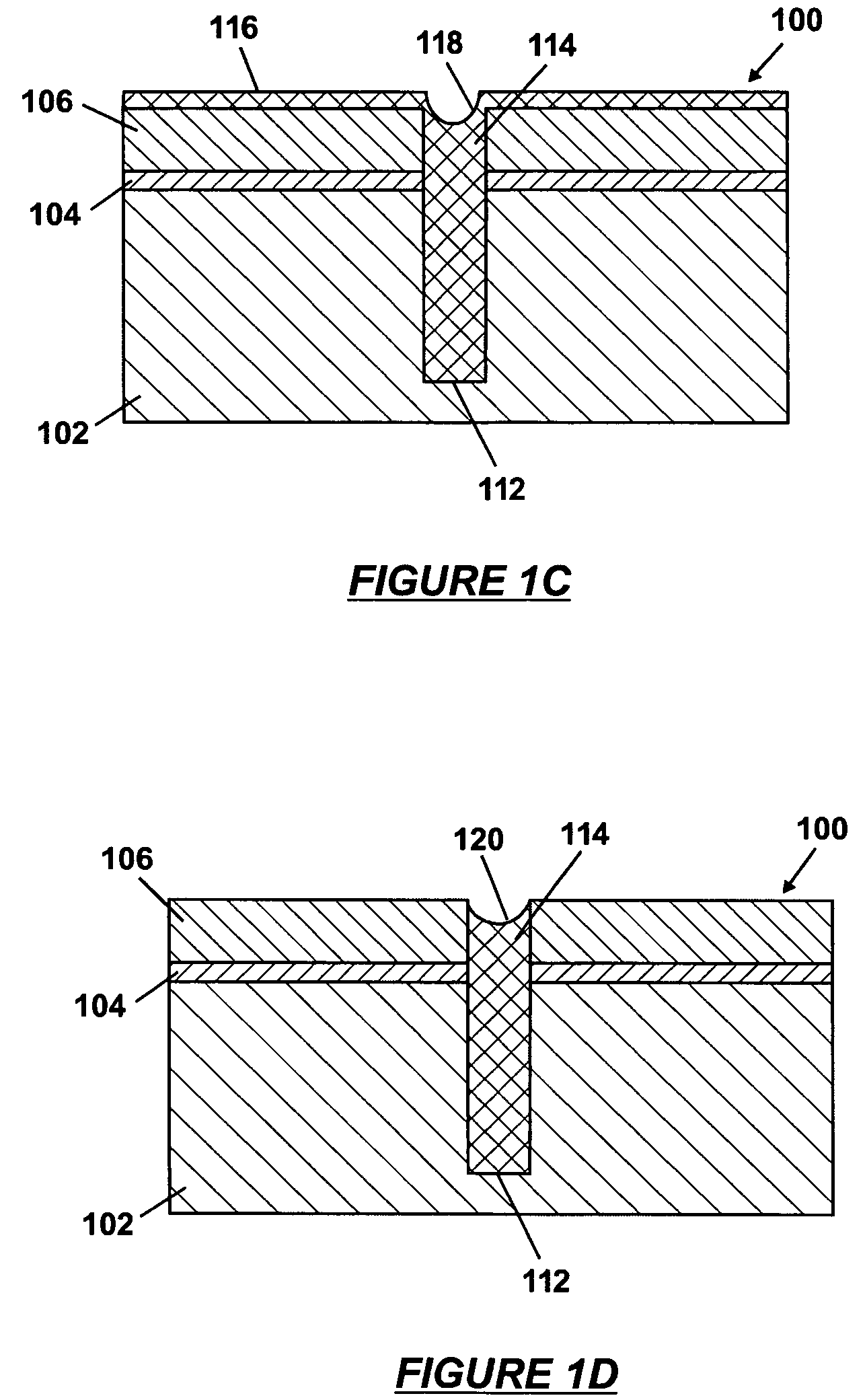Process endpoint detection method using broadband reflectometry
a reflectometry and endpoint technology, applied in the direction of semiconductor/solid-state device testing/measurement, individual semiconductor device testing, instruments, etc., can solve the problem of difficult to determine how far down to etch the polysilicon to make the required recess depth, and the accuracy of forming the desired depth is difficul
- Summary
- Abstract
- Description
- Claims
- Application Information
AI Technical Summary
Benefits of technology
Problems solved by technology
Method used
Image
Examples
Embodiment Construction
[0041]The invention will now be described in detail with reference to a few preferred embodiments, as illustrated in the accompanying drawings. In the following description, numerous specific details are set forth in order to provide a thorough understanding of the invention. It will be apparent, however, to one skilled in the art, that the invention may be practiced without some or all of these specific details. In other instances, well-known process steps and / or features have not been described in detail in order to not unnecessarily obscure the invention. The features and advantages of the invention may be better understood with reference to the drawings and discussions that follow.
[0042]In one embodiment of the invention, broadband reflectometry is used to measure the reflectance from a patterned substrate while the patterned substrate is being processed. The reflectometry approach involves illuminating the patterned substrate with broadband light and collecting reflectance data...
PUM
| Property | Measurement | Unit |
|---|---|---|
| aspect ratio | aaaaa | aaaaa |
| width | aaaaa | aaaaa |
| width | aaaaa | aaaaa |
Abstract
Description
Claims
Application Information
 Login to View More
Login to View More - R&D
- Intellectual Property
- Life Sciences
- Materials
- Tech Scout
- Unparalleled Data Quality
- Higher Quality Content
- 60% Fewer Hallucinations
Browse by: Latest US Patents, China's latest patents, Technical Efficacy Thesaurus, Application Domain, Technology Topic, Popular Technical Reports.
© 2025 PatSnap. All rights reserved.Legal|Privacy policy|Modern Slavery Act Transparency Statement|Sitemap|About US| Contact US: help@patsnap.com



